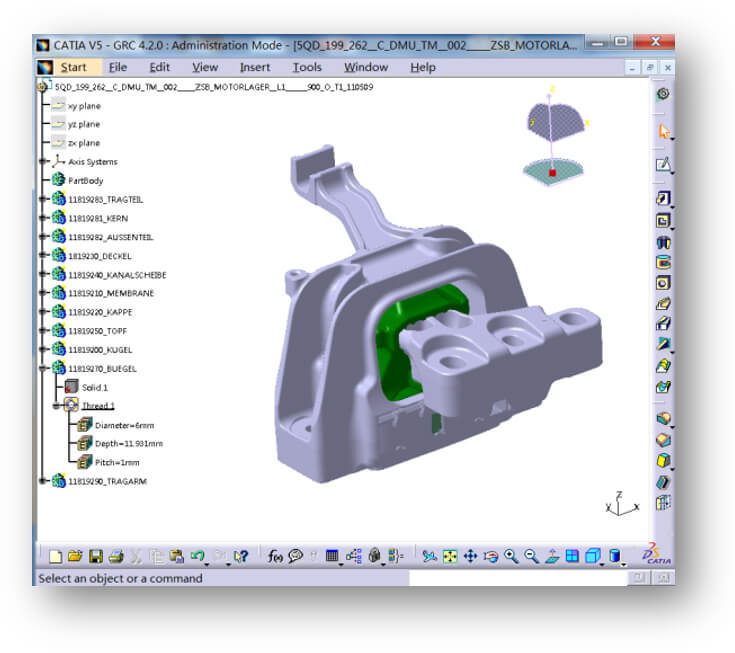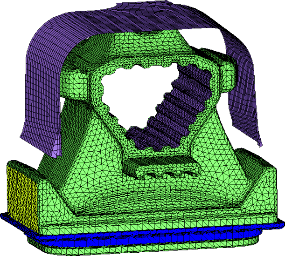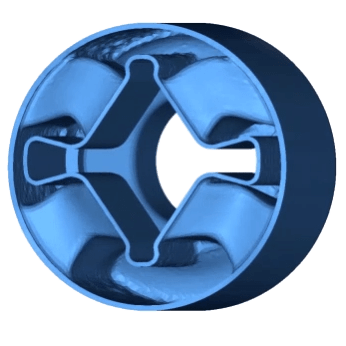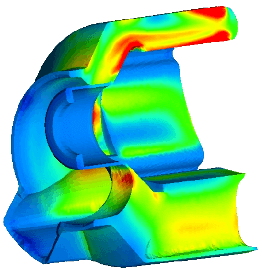Computer Aided Engineering
Using the latest software solutions, we develop virtual components for you and secure them for you.
CAD
NBJX works on the most common CAD programs in the industry for seamless compatibility with the manufacturers. We currently have 11 workstations for CATIA and 3 more for NX ready to work quickly and error-free with the data of other companies.
Uniform dimensions are a matter of course for modern vehicle components. Deviations that are as small as possible with low tolerances are evidence of high quality: a quality feature that goes without saying and which is confronted with ever-increasing demands. Allowing the largest possible individual part tolerances in the development phase while at the same time adhering to the geometric target specifications is the primary goal.
NBJX offers the following services, among others, for the customer's tasks:
- Definition, documentation and visualisation of geometric targets
- Development interfaces
- Visualisation of stiffness and functional requirements
- Definition of reference point systems (RPS) and documentation
- Creation of clamping and fixing concepts
- Carrying out three-dimensional tolerance calculations/simulations
- Tolerance analyses to detect tolerance drivers and for targeted product and process optimisation during development and also in series production
- Determination of measuring points
- Tolerancing of components




Got Questions?
nbjx Europe
+49 811 998 535 0
FEM & Simulation
Finite Element Analysis
Computer-aided simulations and analyses give us the opportunity to raise the quality of our products to a higher level in advance. High-performance computers and the corresponding capacities enable us to check the performance and durability of the components even before the first prototypes are produced.
Quasi-static deformation
Strain & stress analysis
Analysis of linear and non-linear material behaviour
Dynamic characterisation
Natural frequency determination and resonance behaviour
Durability & strength evaluation
Strength analysis based on road induced excitations

Static deformation
Strain analysis and analysis of linear and non-linear material behaviour

Dynamic characterisation
Natural frequency analysis and resonance behaviour

Durability and strength evaluation
Analysis with road signals
Development tools and methods
Component design
After analysing and defining the component specifications and requirements, such as installation space and mounting points, durability requirements, static and dynamic loads, we create the component design with the help of computer-aided development tools.
Protoypes
Finite element analysis reduces the number of physical and experimental analyses on prototypes, as an optimal design is developed at an early stage in the component design. We benefit from our global development team with more than 30 years of development experience in the automotive sector. Global prediction methods via proprietary simulation tools and global company standards for CAD and design drawings ensure a high level of quality even in the early development phase.
Chemical expertise
Our long-standing and comprehensive expertise in materials development provides the basis for a general understanding of the chemical and physical behaviour of our component structures. In order to optimise the respective NVH requirements of our customers in terms of service life and dynamic vibration behaviour, we draw on a wide range of elastomer compounds. Whether natural rubber or temperature-resistant ethylene propylene diene rubber (EPDM), we offer process-stable and reliable materials to reduce noise and vibration. The materials in our compound families are tested in our laboratories for their rheological properties and also for their reaction kinetics, so that they can then be scaled up for industrialisation. In this process, we are a reliable partner for providing the right material compound and have the know-how to match the associated manufacturing processes, such as vulcanisation and adhesion properties, rubber and silicone injection behaviour.
Simulation
On the way to series production, we use computer-aided engineering (CAE) tools to analyse and validate components at the component or subsystem level during the respective development phase. In this way, the performance of the individual component can be precisely predicted over its entire service life for all drive concepts. We use the CAD systems CATIA from Dassault and Siemens NX. In addition to ABAQUS, simulation tools and programmes developed in-house are also used for simulation. After we have created and optimised the component design by means of CAE and defined the correct elastomer compound, prototypes of our drive systems are developed for validation prior to series production.


